Opinion & Analysis
Analyzing Tom Watson’s Potential Ryder Cup picks
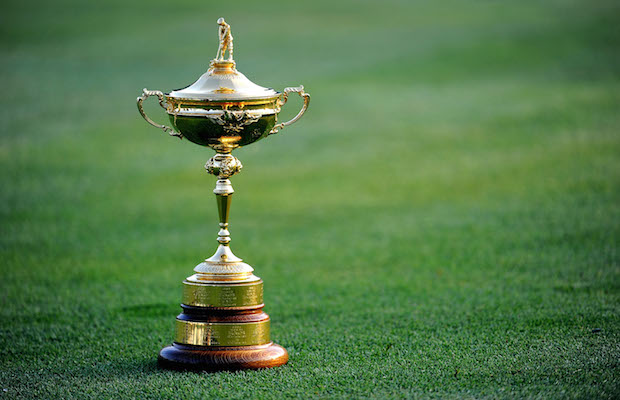
Captain Tom Watson’s captain’s picks for the Ryder Cup became more difficult when Dustin Johnson announced that he will not play in the event. And that was just the start.
I’ve posted the current U.S. Ryder Cup Team standings below. Remember, the top-9 finishers on the points list automatically earn a spot on the team, and T. Watson will pick two additional players of his choice to round out the lineup. Qualifying finishes this weekend at the conclusion of the PGA Championship.
- Bubba Watson
- Jim Furyk
- Jimmy Walker
- Rickie Fowler
- Matt Kuchar
- Jordan Spieth
- Patrick Reed
- Jason Dufner
- Zach Johnson
- Phil Mickelson
- Keegan Bradley
- Brendan Todd
- Ryan Moore
- Chris Kirk
- Webb Simpson
- Harris English
Jason Dufner (No. 8) announced that he has bulging disks in his neck, and Tiger Woods, who all expected to either make the team or be a captain’s pick before his back surgery, has yet to play well enough to prove that he can be a good addition to the Ryder Cup team, even if he is 100 percent healthy. To make things worse, Matt Kuchar (No. 5) withdrew from the PGA Championship today with back spasms, bringing his health into question.
The U.S. Team will also be playing against an impressive European team that has a red hot Rory McIlroy and Sergio Garcia. Despite these recent events, I still believe that a statistically oriented approach to the Ryder Cup can greatly overcome these odds.
First, I want to run over some of the main tenets when it comes to using a statistically oriented approach to the Ryder Cup:
No. 1: Versatility is critical
Ryder Cup teams need golfers who are suited to play both the four-ball and foursome format. This way, if a player is playing poorly, the team does not have to rely on him to start playing well and can have a different golfer come in and win valuable point(s).
No. 2: When in doubt, favor youth over experience
Most of the U.S. Ryder Cup team captains in recent years have favored experience above all else. Even if a Ryder Cup player is experienced, however, if he has proved to be a poor Ryder Cup player he is simply an experienced, poor Ryder Cup player.
The other part about youth is that if a young player gets a hot hand, the captain can keep him in the lineup without worrying about his stamina. That’s not always true for an older player or an injured player. Lastly, it serves future Ryder Cup teams to see how well these young players perform. It will help future captains better determine if they are a good, poor or indifferent Ryder Cup players.
No. 3: Favor players with great short games over the “hot putter”
While being a good putter is certainly helpful, the best Ryder Cup players historically have been very good around the green. This includes players like Luke Donald, Ian Poulter, Jesper Parnevik, Raymond Floyd, Billy Casper, Larry Nelson and Seve Ballesteros, to name a few. The problem with looking purely at putting is that it is hard to rely on player to putt well at any given moment. Even the best putters on Tour putt great (+1.0 strokes gained per round per event) in only about 30 percent of the events they play. Conversely, players with good short games can take that short game from event to event much more consistently, and the ability to save par and stymie your opponent appears to be critical to successful match play.
No. 4: Four-ball format is about birdies and playing each type of hole well
In the four-ball format, Ryder Cup team captains want players who can make a lot of birdies. One of my favorite teams in the four-ball format was Boo Weekley and J.B. Holmes in 2008. Weekley is a long hitter who finds a ton of fairways and is usually one of the most effective drivers of the ball. Holmes was the long distance hitter who made a ton of birdies and had the capability to make eagles. So they would have Weekley tee off first and he would usually blast a 300+ yard drive down the middle. And if Weekley was in good shape that would allow Holmes to get a free rip and blast a 375+ yard drive. If the ball was in play, it would put them at a sizeable advantage. Weekley was also a strong par-4 player and a pretty good par-3 player, while Holmes was an excellent par-5 player. Essentially, they had all of their bases covered and could rattle off birdies.
5. Foursome format is about avoiding bogeys and pairing players whose styles of play compliment each other
The foursome format is where bogeys are more likely to happen and this is where a great short game can be even more important. You can have two players who make few bogeys, however, who are a terrible match for each other. For instance, Phil Mickelson and Jim Furyk may not make a lot of bogeys, but that is on their own ball. Furyk is a player who hits fairways and does not play well from the rough. Since Mickelson is an errant driver of the ball, the combination would not likely be a very good one.
With those out of the way, here’s a table looking at the rankings of some key players that are not in the top-8 in Ryder Cup points. You can click the table to enlarge it.
I will start with some of the obvious players. Zach Johnson should be a sure fire pick if he doesn’t automatically qualify. He’s played well in previous Ryder Cups and his rankings in the key performance metrics are excellent. In fact, he has done a nice job of hitting shots from the rough this year, which have typically given him issues. And he has been spectacular on the par-5’s despite being a short hitter.
I would also eliminate the following players:
- Matt Every (poor driving and par-4 play).
- Erik Compton (poor driving, poor iron play, poor bogey rate).
- Webb Simpson (poor 175-to-225 yards play)
- Brendon Todd (poor 175-to-225 yards play)
- Kevin Stadler (poor par-4 play)
The Ryder Cup courses generally favor hitting shots from 175-to-225 yards, so I would be leery of using any player who has struggled from that distance this year. And since there are 11 par-4’s to be played, the team cannot afford a weak par-4 player.
From there, I will bring it down to these players for the final three spots.
- Phil Mickelson
- Keegan Bradley
- Ryan Moore
- Kevin Na
- Harris English
- Brian Harman
Keegan Bradley becomes the first obvious choice. He has driven it well and has been good with his long approach shots, short game and putting. The issue for Bradley has been iron shots from less than 175 yards. However, he can be paired with an accurate driver of the ball and keep him playing those shots from the fairway. Combine that with his performance on par-3’s, par-4’s and par-5’s and his Birdie Rate, and Bradley is a versatile player who played superbly in the last Ryder Cup.
Mickelson
I will assume that Phil Mickelson will be selected if he does not automatically qualify. Regardless of what the data says, I have a hard time believing a captain would not select Lefty if he is healthy. So as far as his analysis goes, he’s been a streaky Ryder Cup player. But, he has been better in recent Ryder Cups.
The interesting thing about Phil is that while he has had an off year, the numbers indicate that he is better suited for the Ryder Cup than he has been over the years. His driving has been the best it has been in years, although I would not call him overly accurate. What has hurt him this year, however, is that his iron play has not been quite as good from inside 175 yards than it has been in previous seasons, but he is still a great long approach player. The other issue is that his putting was giving him issues, but we have seen some progression lately.
I don’t think Phil will be a bad pick, although both Ryan Moore and Brian Harman are enticing. Harman is ranks 6th on shots from the fairway, has a good short game and has quality scoring metrics. If there is a worry about Mickelson, it’s that he has yet to finish in the top-10 this year and suffered back problems earlier in the year. I would not be vehemently against a Mickelson pick, but I am not assuming that he and Keegan Bradley will automatically pick up where they left off in 2012 at Medinah.
The Last Pick
This player currently has all of the elements of a good Ryder Cup player.
- He has a super low bogey rate.
- He has a great short game.
- He is one of the premier putters on Tour.
- He hits his long approach shots well from both the rough and the fairway.
- He has having a fine year with his scoring metrics.
- He is only 30 years old.
Who is this player? If you guessed Kevin Na, you are correct.
The possible knock against Na is he has gone fairly unnoticed this year. He has five top-10 finishes, however, which include two second-place finishes. He also finished T12 at the US Open.
The other knock against Na may be his slow play. That could aggravate his partner, but it may aggravate his opponents as well. Colin Montgomerie was not overly liked and was a phenomenal Ryder Cup player, and Sergio was one of the slowest players on Tour during his unbeatable years in the Ryder Cup.
Regardless of how this year’s Ryder Cup qualifying plays out, I see Captain Watson making sure that Mickelson, Z. Johnson, Bradley, Simpson and Dufner (if he’s healthy enough) for this year’s team. That’s a shame, because I’d like to see Harman and especially Na get a chance to prove that they could be fantastic Ryder Cup players.
- LIKE0
- LEGIT0
- WOW0
- LOL0
- IDHT0
- FLOP0
- OB0
- SHANK0
19th Hole
Vincenzi’s 2024 Zurich Classic of New Orleans betting preview

The PGA TOUR heads to New Orleans to play the 2023 Zurich Classic of New Orleans. In a welcome change from the usual stroke play, the Zurich Classic is a team event. On Thursday and Saturday, the teams play best ball, and on Friday and Sunday the teams play alternate shot.
TPC Louisiana is a par 72 that measures 7,425 yards. The course features some short par 4s and plenty of water and bunkers, which makes for a lot of exciting risk/reward scenarios for competitors. Pete Dye designed the course in 2004 specifically for the Zurich Classic, although the event didn’t make its debut until 2007 because of Hurricane Katrina.
Coming off of the Masters and a signature event in consecutive weeks, the field this week is a step down, and understandably so. Many of the world’s top players will be using this time to rest after a busy stretch.
However, there are some interesting teams this season with some stars making surprise appearances in the team event. Some notable teams include Patrick Cantlay and Xander Schauffele, Rory McIlroy and Shane Lowry, Collin Morikawa and Kurt Kitayama, Will Zalatoris and Sahith Theegala as well as a few Canadian teams, Nick Taylor and Adam Hadwin and Taylor Pendrith and Corey Conners.
Past Winners at TPC Louisiana
- 2023: Riley/Hardy (-30)
- 2022: Cantlay/Schauffele (-29)
- 2021: Leishman/Smith (-20)
- 2019: Palmer/Rahm (-26)
- 2018: Horschel/Piercy (-22)
- 2017: Blixt/Smith (-27)
2024 Zurich Classic of New Orleans Picks
Tom Hoge/Maverick McNealy +2500 (DraftKings)
Tom Hoge is coming off of a solid T18 finish at the RBC Heritage and finished T13 at last year’s Zurich Classic alongside Harris English.
This season, Hoge is having one of his best years on Tour in terms of Strokes Gained: Approach. In his last 24 rounds, the only player to top him on the category is Scottie Scheffler. Hoge has been solid on Pete Dye designs, ranking 28th in the field over his past 36 rounds.
McNealy is also having a solid season. He’s finished T6 at the Waste Management Phoenix Open and T9 at the PLAYERS Championship. He recently started working with world renowned swing coach, Butch Harmon, and its seemingly paid dividends in 2024.
Keith Mitchell/Joel Dahmen +4000 (DraftKings)
Keith Mitchell is having a fantastic season, finishing in the top-20 of five of his past seven starts on Tour. Most recently, Mitchell finished T14 at the Valero Texas Open and gained a whopping 6.0 strokes off the tee. He finished 6th at last year’s Zurich Classic.
Joel Dahmen is having a resurgent year and has been dialed in with his irons. He also has a T11 finish at the PLAYERS Championship at TPC Sawgrass which is another Pete Dye track. With Mitchell’s length and Dahmen’s ability to put it close with his short irons, the Mitchell/Dahmen combination will be dangerous this week.
Taylor Moore/Matt NeSmith +6500 (DraftKings)
Taylor Moore has quickly developed into one of the more consistent players on Tour. He’s finished in the top-20 in three of his past four starts, including a very impressive showing at The Masters, finishing T20. He’s also finished T4 at this event in consecutive seasons alongside Matt NeSmith.
NeSmith isn’t having a great 2024, but has seemed to elevate his game in this format. He finished T26 at Pete Dye’s TPC Sawgrass, which gives the 30-year-old something to build off of. NeSmith is also a great putter on Bermudagrass, which could help elevate Moore’s ball striking prowess.
- LIKE6
- LEGIT1
- WOW1
- LOL0
- IDHT0
- FLOP2
- OB1
- SHANK1
19th Hole
Vincenzi’s 2024 LIV Adelaide betting preview: Cam Smith ready for big week down under

After having four of the top twelve players on the leaderboard at The Masters, LIV Golf is set for their fifth event of the season: LIV Adelaide.
For both LIV fans and golf fans in Australia, LIV Adelaide is one of the most anticipated events of the year. With 35,000 people expected to attend each day of the tournament, the Grange Golf Club will be crawling with fans who are passionate about the sport of golf. The 12th hole, better known as “the watering hole”, is sure to have the rowdiest of the fans cheering after a long day of drinking some Leishman Lager.
The Grange Golf Club is a par-72 that measures 6,946 yards. The course features minimal resistance, as golfers went extremely low last season. In 2023, Talor Gooch shot consecutive rounds of 62 on Thursday and Friday, giving himself a gigantic cushion heading into championship Sunday. Things got tight for a while, but in the end, the Oklahoma State product was able to hold off The Crushers’ Anirban Lahiri for a three-shot victory.
The Four Aces won the team competition with the Range Goats finishing second.
*All Images Courtesy of LIV Golf*
Past Winners at LIV Adelaide
- 2023: Talor Gooch (-19)
Stat Leaders Through LIV Miami
Green in Regulation
- Richard Bland
- Jon Rahm
- Paul Casey
Fairways Hit
- Abraham Ancer
- Graeme McDowell
- Henrik Stenson
Driving Distance
- Bryson DeChambeau
- Joaquin Niemann
- Dean Burmester
Putting
- Cameron Smith
- Louis Oosthuizen
- Matt Jones
2024 LIV Adelaide Picks
Cameron Smith +1400 (DraftKings)
When I pulled up the odds for LIV Adelaide, I was more than a little surprised to see multiple golfers listed ahead of Cameron Smith on the betting board. A few starts ago, Cam finished runner-up at LIV Hong Kong, which is a golf course that absolutely suits his eye. Augusta National in another course that Smith could roll out of bed and finish in the top-ten at, and he did so two weeks ago at The Masters, finishing T6.
At Augusta, he gained strokes on the field on approach, off the tee (slightly), and of course, around the green and putting. Smith able to get in the mix at a major championship despite coming into the week feeling under the weather tells me that his game is once again rounding into form.
The Grange Golf Club is another course that undoubtedly suits the Australian. Smith is obviously incredibly comfortable playing in front of the Aussie faithful and has won three Australian PGA Championship’s. The course is very short and will allow Smith to play conservative off the tee, mitigating his most glaring weakness. With birdies available all over the golf course, there’s a chance the event turns into a putting contest, and there’s no one on the planet I’d rather have in one of those than Cam Smith.

Louis Oosthuizen +2200 (DraftKings)
Louis Oosthuizen has simply been one of the best players on LIV in the 2024 seas0n. The South African has finished in the top-10 on the LIV leaderboard in three of his five starts, with his best coming in Jeddah, where he finished T2. Perhaps more impressively, Oosthuizen finished T7 at LIV Miami, which took place at Doral’s “Blue Monster”, an absolutely massive golf course. Given that Louis is on the shorter side in terms of distance off the tee, his ability to play well in Miami shows how dialed he is with the irons this season.
In addition to the LIV finishes, Oosthuizen won back-to-back starts on the DP World Tour in December at the Alfred Dunhill Championship and the Mauritus Open. He also finished runner-up at the end of February in the International Series Oman. The 41-year-old has been one of the most consistent performers of 2024, regardless of tour.
For the season, Louis ranks 4th on LIV in birdies made, T9 in fairways hit and first in putting. He ranks 32nd in driving distance, but that won’t be an issue at this short course. Last season, he finished T11 at the event, but was in decent position going into the final round but fell back after shooting 70 while the rest of the field went low. This season, Oosthuizen comes into the event in peak form, and the course should be a perfect fit for his smooth swing and hot putter this week.

- LIKE10
- LEGIT2
- WOW0
- LOL0
- IDHT0
- FLOP0
- OB0
- SHANK0
Opinion & Analysis
The Wedge Guy: What really makes a wedge work? Part 1

Of all the clubs in our bags, wedges are almost always the simplest in construction and, therefore, the easiest to analyze what might make one work differently from another if you know what to look for.
Wedges are a lot less mysterious than drivers, of course, as the major brands are working with a lot of “pixie dust” inside these modern marvels. That’s carrying over more to irons now, with so many new models featuring internal multi-material technologies, and almost all of them having a “badge” or insert in the back to allow more complex graphics while hiding the actual distribution of mass.
But when it comes to wedges, most on the market today are still single pieces of molded steel, either cast or forged into that shape. So, if you look closely at where the mass is distributed, it’s pretty clear how that wedge is going to perform.
To start, because of their wider soles, the majority of the mass of almost any wedge is along the bottom third of the clubhead. So, the best wedge shots are always those hit between the 2nd and 5th grooves so that more mass is directly behind that impact. Elite tour professionals practice incessantly to learn to do that consistently, wearing out a spot about the size of a penny right there. If impact moves higher than that, the face is dramatically thinner, so smash factor is compromised significantly, which reduces the overall distance the ball will fly.
Every one of us, tour players included, knows that maddening shot that we feel a bit high on the face and it doesn’t go anywhere, it’s not your fault.
If your wedges show a wear pattern the size of a silver dollar, and centered above the 3rd or 4th groove, you are not getting anywhere near the same performance from shot to shot. Robot testing proves impact even two to three grooves higher in the face can cause distance loss of up to 35 to 55 feet with modern ‘tour design’ wedges.
In addition, as impact moves above the center of mass, the golf club principle of gear effect causes the ball to fly higher with less spin. Think of modern drivers for a minute. The “holy grail” of driving is high launch and low spin, and the driver engineers are pulling out all stops to get the mass as low in the clubhead as possible to optimize this combination.
Where is all the mass in your wedges? Low. So, disregarding the higher lofts, wedges “want” to launch the ball high with low spin – exactly the opposite of what good wedge play requires penetrating ball flight with high spin.
While almost all major brand wedges have begun putting a tiny bit more thickness in the top portion of the clubhead, conventional and modern ‘tour design’ wedges perform pretty much like they always have. Elite players learn to hit those crisp, spinny penetrating wedge shots by spending lots of practice time learning to consistently make contact low in the face.
So, what about grooves and face texture?
Grooves on any club can only do so much, and no one has any material advantage here. The USGA tightly defines what we manufacturers can do with grooves and face texture, and modern manufacturing techniques allow all of us to push those limits ever closer. And we all do. End of story.
Then there’s the topic of bounce and grinds, the most complex and confusing part of the wedge formula. Many top brands offer a complex array of sole configurations, all of them admittedly specialized to a particular kind of lie or turf conditions, and/or a particular divot pattern.
But if you don’t play the same turf all the time, and make the same size divot on every swing, how would you ever figure this out?
The only way is to take any wedge you are considering and play it a few rounds, hitting all the shots you face and observing the results. There’s simply no other way.
So, hopefully this will inspire a lively conversation in our comments section, and I’ll chime in to answer any questions you might have.
And next week, I’ll dive into the rest of the wedge formula. Yes, shafts, grips and specifications are essential, too.
- LIKE31
- LEGIT7
- WOW1
- LOL1
- IDHT2
- FLOP3
- OB1
- SHANK3
-

 19th Hole2 weeks ago
19th Hole2 weeks agoDave Portnoy places monstrous outright bet for the 2024 Masters
-

 19th Hole2 weeks ago
19th Hole2 weeks agoTiger Woods arrives at 2024 Masters equipped with a putter that may surprise you
-

 19th Hole17 hours ago
19th Hole17 hours ago‘Absolutely crazy’ – Major champ lays into Patrick Cantlay over his decision on final hole of RBC Heritage
-

 19th Hole3 weeks ago
19th Hole3 weeks agoReport: Tiger Woods has ‘eliminated sex’ in preparation for the 2024 Masters
-

 19th Hole1 week ago
19th Hole1 week agoTwo star names reportedly blanked Jon Rahm all week at the Masters
-

 19th Hole7 days ago
19th Hole7 days agoReport: LIV Golf identifies latest star name they hope to sign to breakaway tour
-

 19th Hole1 week ago
19th Hole1 week agoNeal Shipley presser ends in awkward fashion after reporter claims Tiger handed him note on 8th fairway
-

 19th Hole6 days ago
19th Hole6 days agoBrandel Chamblee has ‘no doubt’ who started the McIlroy/LIV rumor and why

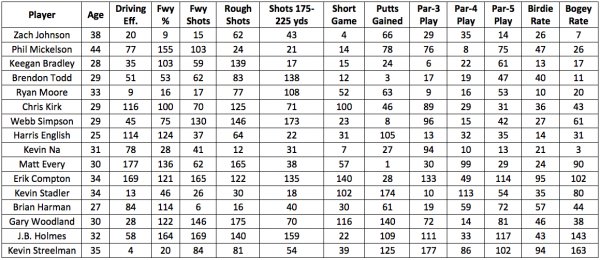



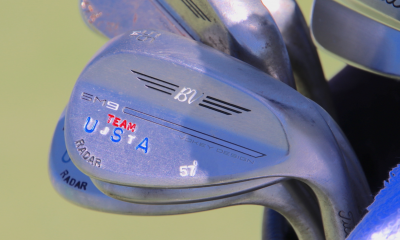

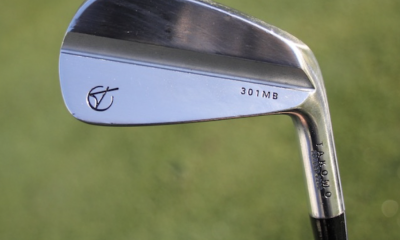

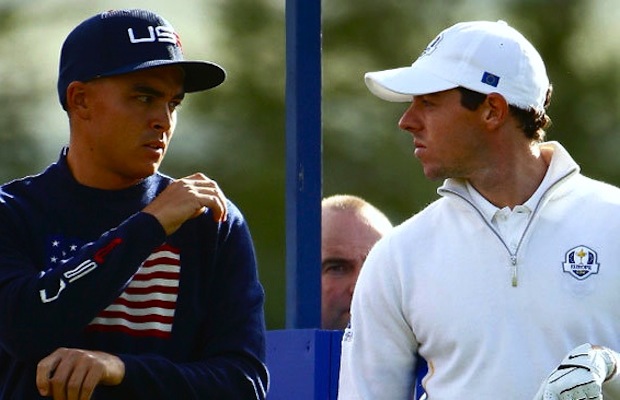
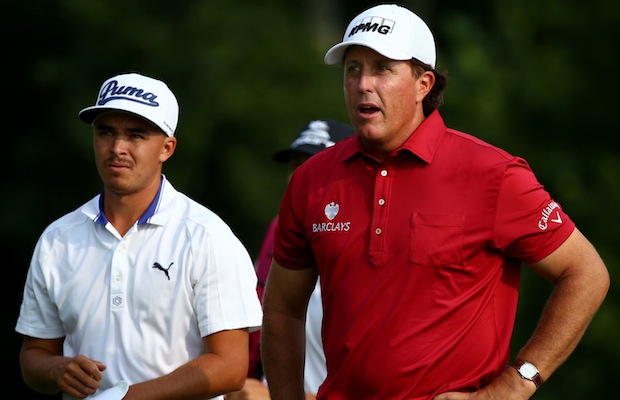
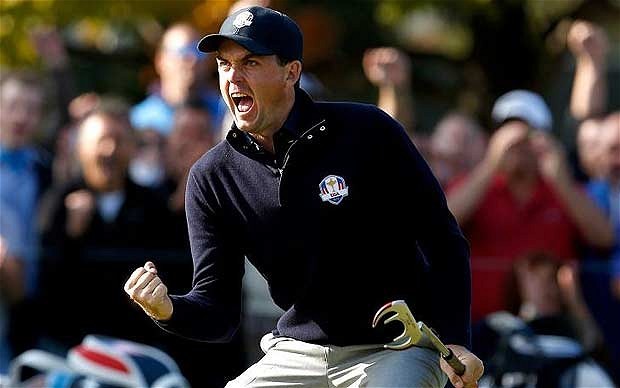
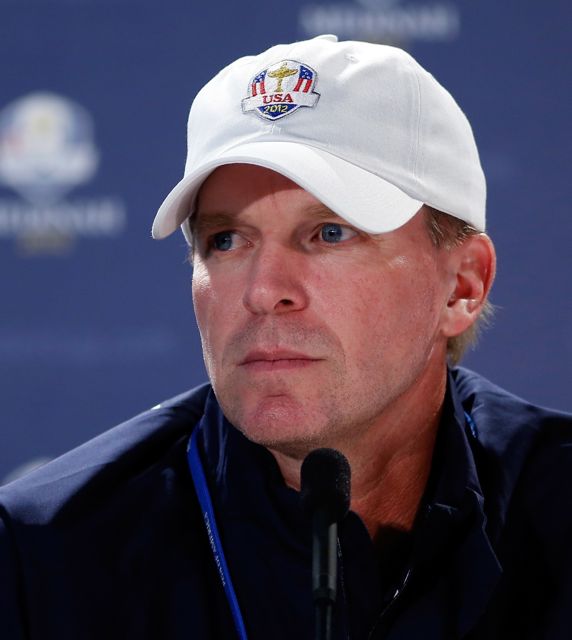












Pingback: Ryder Cup Preview: The Course, Home Field, & Competition | Golf Analytics
Pingback: Watson goes with familiarity for Gleneagles | AdamSarson.com
Pingback: ¿En qué nos deberíamos fijar para la elección del Capitán de la Ryder Cup? - Golf76.com
marcel
Aug 10, 2014 at 9:05 pm
hes gona pick Rory
Ronald Montesano
Aug 8, 2014 at 1:06 pm
Guess what? He’s going to pick himself. He’ll be the first playing captain in over fifty years, he has played well in two major championships and (here’s the funny part) he’s not injured. He just added Steve Stricker as an assistant captain, probably because Stricker is young in comparison to the other assistants.
Stricker is also a possibility as a pick. If one of the guys (Kuchar, Dufner) on the team goes down in Scotland, Stricker will be there and will be a legitimate choice to play.
BogeyFree
Aug 8, 2014 at 10:44 am
My order would be Moore, Bradley, then Na. I’d even take those 3 over Woods or Michelson. At some point it is entertainment and I understand that, so Michelson is probably a lock.
I am older guy, but frankly it’s time to bring some youth to the US side. The team already has Furyk and Johnson, plus Watson and Stricker coaching. How much experience do you need…especially when that experience is more with losing than winning Ryder Cups?
Alex
Aug 8, 2014 at 12:50 am
Nice.
Na could be a golden idea, or turn out to be a total bad move. It’s interesting how much you have to decide if stats alone are worth making a decision on.
I think Na could be a good choice. Unless he can’t rise to the occasion. I’d say, give him a shot.
Any chance we will see a European article soon?
Richie Hunt
Aug 8, 2014 at 9:08 am
I may do a European article. Depends on how many of the players qualify statistically on the PGA Tour so I can have statistical data on them to analyze.
While the data appears to favor the European team heavily, I could say the same for the US team in 2012. Jumped out to a big lead and then lost at Medinah. You never quite know with this rivalry.
ND Hickman
Aug 12, 2014 at 6:58 am
As a Brit I’m confident for Europe this year, but as you say the Americans should have closed things out at Medinah so we’ll just have to wait and see. Either way it’s going to be a brilliant Ryder Cup.
gunmetal
Aug 7, 2014 at 6:48 pm
I absolutely love the Na pick. He sorta flies under the radar but possesses everything you outlined as critical.
I’m not sold on the Bradley pick. I should be, but I feel like he lets his emotion get out of control and it ends up hurting. He got destroyed by Rory last year despite Rory essentially falling out of the car on to the first tee box. I know he’s the popular pick and will likely make it, I just hope he keeps his emotions in check.
I also think another thing to consider is matchplay record. Mahan got a bad rap for what went down in Wales, but he should have been on the team at Medina. Despite winning twice in 2012 (once at the Matchplay) Love chose Striker and Furyk. Mahan won the matchplay!! IIRC Ryan Moore has a nice matchplay record as do Reed and Fowler. I’d be happy with Na or Moore.
Nice read.
SN
Aug 8, 2014 at 12:53 am
Na is a good choice.
I think his pace of play will also pixxed the heck out of Europeans.
and THAT is another advantage.
C web
Aug 8, 2014 at 8:41 am
Just Pair Na with Furyk…. And watch the Euros self destruct
Brad
Aug 7, 2014 at 6:35 pm
Great overall analysis. Even though statistics are an awesome way to determine many things (I am an engineer) in the case I have to disagree with Kevin Na. He is a nice player statistically, but he has really struggled with the mental game over the years. The Ryder Cup may be the most mentally stressful environment in golf. I think it would be tough for him to excel in this environment.
mb
Aug 7, 2014 at 6:02 pm
I feel bad for Tom he’s screwed J Duf just pulled out of the PGA
Richie Hunt
Aug 8, 2014 at 9:10 am
So did Kuchar. Yikes!
Travis
Aug 7, 2014 at 6:02 pm
Nice article